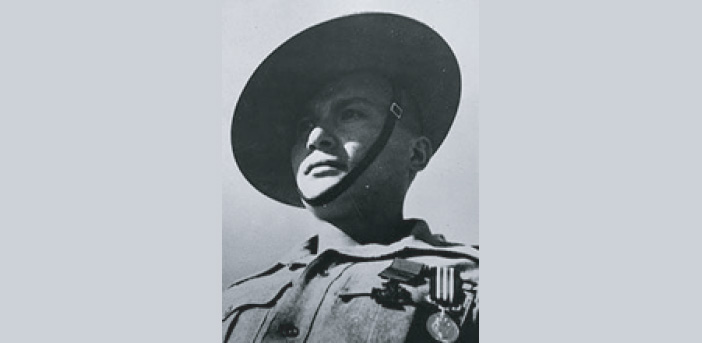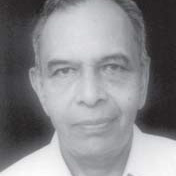Ganju Lama was born on 22 July 1924, in Sangmo in Southern Sikkim. His parents were of Sikkim Bhutia descent. He was actually named Gyamtso Shangderpa. The recruiting clerk by mistake wrote ‘Ganju’, and the name stuck. At the age of 17 years, he enlisted in the British Gorkha Army. He was not an ethnic Gorkha or a Nepalese citizen. He was accepted in the Gorkha Regiment as at that time, the British were prepared to accept any one who looked like a Gorkha. He joined No. 1 Battalion 7th Gorkha Rifles (1/7 GR) in Imphal.
1/7GR was part of the 48 Infantry Brigade in 17 Indian Division, who were advancing to recapture Imphal. Their advance had faltered north-east of Imphal on the Tiddim Road. The unit faced intense fire from machine guns mounted on tanks. Rifleman Ganju Lama crawled forward to within sixty yards of the enemy tanks. He fired his PIAT (projector infantry anti-tank) weapon. His second shot pierced the armour of the leading tank and destroyed it. His platoon was ordered to pull back and Ganju Lama remained in position to cover their withdrawal. He was awarded the Military Medal for courage. Surprisingly, the award of Military medal was announced in the London Gazette a month after the announcement of Victoria Cross (VC).
The progress of 17 Indian Division was blocked by the 15th Army of Japan on the Tiddim road near Imphal. In three weeks, 48 Infantry Brigade had barely reached village Ningthookong, a distance of 12 Miles. On 12 June 1944, the Brigade positions came under heavy fire and the Japanese infantry and tanks broke through the British positions. 1/7 GR, occupying a position near village Ningthoukhong, suffered heavy casualties from the artillery barrage, and many bunkers were destroyed. The Gorkha unit was ordered to counter-attack and restore the situation. The Gorhkas faced heavy fire from Japanese tanks and machine guns.
Ganju Lama was severely wounded in his right hand and leg, and had a broken wrist. In spite of his injuries, he crawled forward and engaged the enemy tanks single-handed. He succeeded in destroying two tanks from within a distance of thirty yards. He could not use his hand due to the injuries, and managed to kill or wound the escaping tank crew by pulling the pin of the grenade by his teeth. He allowed himself to be evacuated to the Regimental Aid Post for treatment of wounds after completing the task. The unit succeeded in its task due to his personal courage, determination, and complete disregard for his personal safety. He was awarded the Victoria Cross (VC), the citation for which reads:
“Throughout this action, Rifleman Ganju Lama, although seriously wounded, showed a complete disregard for his personal safety, outstanding devotion to duty and a determination to destroy the enemy, that was an example and an inspiration to all ranks. It was solely due to his prompt action and brave conduct that a most critical situation was averted, all positions regained, and heavy casualties inflicted on the enemy.”
He was evacuated to the Base Hospital, where he spent 22 months. The medal was presented to him by the Viceroy, Field Marshal Lord Wavell, in the Red Fort at Delhi. Lord Mountbatten and his family were also present. He received his VC and Military Medal in the wheel chair.
After Independence, he opted to remain in India and joined 11 Gorkha Rifles (11 GR). He was promoted to Subedar Major and was appointed honorary ADC to the President of India in 1965. He achieved the distinction of being promoted Honorary Captain in 1968. He retired in 1972 and became a farmer in Sikkim. He visited UK regularly, and was vice-chairman (Overseas) of the Victoria Cross and George Cross Association for nine years. His Victoria Cross medal is displayed at The Gorkha Museum in Winchester, England, along with those of the other Gorkha soldiers.
He was highly intelligent and caring, with an impressive personality. He married twice. He passed away on 30 June 2000, and is survived by his second wife and six children..


 [/column]
[/column]